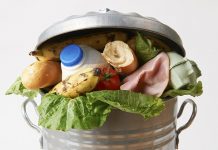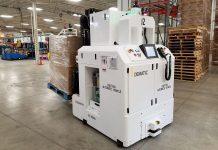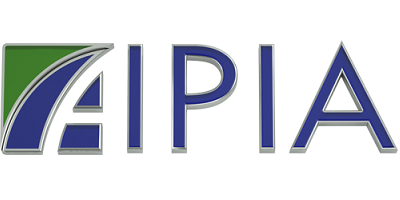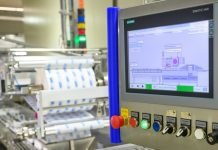A recent survey* of more than 3000 stakeholders found sustained interest in smart and connected packaging over the last 12 months, with 82% of those surveyed stating they have used connected packaging, similar to 2023, and considerably higher than the immediate post-COVID number of 54 percent.
The barriers to using smart, connected packaging have changed year-on-year with technology knowhow missing, uncertainty on how to handle the data, poor application knowledge and lack of readiness all listed as key concerns. Less than 10% stated that connected packaging wasn’t a business requirement for this year, showing fluctuating business priorities when compared to 2023.
Connected packaging is considered important to inform product and marketing decisions, alongside direct interaction with customers, data collection and educating customers, the survey showed. Smart packaging being an environmentally sustainable way to connect with and educate customers registered less with responders. However, the industry is making strong efforts to show how smart and active packaging is part of the environmental solution, in terms of sorting technology for recycling, communicating sustainability information and messages and most importantly, reducing food waste.
Increased investment in digital marketing spend is forecast to go up year-on-year, compared to 2023 and with a big jump from 2022. A large majority of respondents claim to be planning a connected packaging campaign this year, with 80% citing that connected packaging will be increasingly important to the packaging industry in the next 12 months and beyond.
Sustainability vs Digitization
On a broader front sustainability as THE issue will continue to top the agenda for most Brands and packaging companies as the pressure from external forces, such as the many pressure groups and a raft of legislative measures and policies, seem to have them in their thrall. But the rapid development of digitization is becoming a much stronger force, as consumers care less about how green the pack is and more about the cost, size or condition of the product inside.
Shoppers want more information about their products and connected packaging can deliver messages easily through their smartphones – even messages about how to recycle or reuse the packaging! Digitisation not only allows connectivity, it also enables personalised promotions or variable campaigns, making Brands more agile in the way they meet changing market preferences. But the key must be better consumer engagement, whatever the message.
For food and beverage manufacturers there is a strong trend towards active packaging technologies which can extend shelf life and improve product safety and security. As many retailers continue to question, or even drop Best Before or Use By dates on several lines, it would seem nonsensical to not use other technologies (which are actually more accurate) to inform consumers of the condition inside the pack. This will not only lead to a reduction in food waste but, if managed properly, a better margin for the producer and retailer as foods can be kept longer at their original price point, or the discount system can be phased more effectively.
For pharmaceuticals it has got to be about traceability as the full effects of legislative measures such as FMD and DSCSA start kick in. But there is also increasing awareness that non-compliance (so wasted drugs or misused drugs – particularly drug addiction) have a huge impact on the sector and there will be more focus on carers being able to monitor the patient remotely and ensure they are taking the drugs effectively as prescribed and also if they need replenishing. A ‘next step’ will be personalising the drug regime for each patient; such technology already exists and its benefits are being more widely recognised, even if its cost effectiveness is not yet fully developed.
As an overall point, one which is recognised as a key benefit, smart packaging opens a new dimension to the collection and delivery of Data which can then be used to enable New Product Development, Provenance, Authentication, Supply Chain Security and Consumer Engagement. Data flows two ways, outwards to suppliers, retailers and customers and internally to improve production, distribution and marketing. So being able to interpret this stream of data is vital. All stakeholders in the supply chain need to change their way of thinking about how to handle data, to ensure it is shared across all parts of the business.
Automation
Both robotics and AI are already having profound impact on packaging lines. As someone prophetically said many years ago “Robots don’t need holidays or go off sick.” So it has been surprising that automation of simpler operations such as intelligent palletisation has not gone faster. These days it is unlikely there is a high-speed line in the food sector which does not use some kind of pick and place technology. So l think robotics can only become more and more ubiquitous in packaging operations.
The ‘new kid on the block’ is AI which is allowing a whole new generation of production machines from self-diagnostics through machine learning and producing analytics for analysis. I do not pretend to be anything of an expert on AI, but my long involvement in packaging leads me to believe its impact will be as profound as the stepper motor and electronic controls were 20 years ago. These machines can not only regulate themselves but also provide valuable data about the process, watch this space!
Smart sustainability
Sustainability impacts on just about everything and not always for the best in my opinion. The topic has, seemingly, infatuated governments, NGOs like WRAP and worthy but, in my view misguided consortia such as the Ellen McArthur Foundation. In addition the national and, sadly, the packaging media have been complicit in peddling a lot of misguided and often highly dubious information about, mostly, plastics (packaging is an easy victim for politicians.)
FACT: plastics is an excellent and pound for pound, highly sustainable packaging material. It is what we do, or do NOT do, with it that is the problem. The industry has invested many 100s of millions of its R&D budgets in what are supposed to be recyclable or compostable materials. Not all of this is bad, but when LCAs are done on the whole of life of a CPG quite often the environmental impact of the pack is tiny compared to the carbon footprint of food waste.
Of course we should make more mono-materials which are easy to recycle and of course we need to explore how we can build re-use into the system where practical. But let’s get a sense of proportion and not, as one major UK supermarket chain did, change all its milk containers from HDPE to paper based cartons only to find the cartons are infinitely more difficult to recycle and weigh 30% more than the perfectly serviceable plastic container!
There are technologies available to make it easier to sort different plastics to facilitate recycling. But, for example, digital watermarks, championed in Europe by the HolyGrail 2.0 project, need to be rolled out at scale to make it viable and there needs to be sufficient recycling capacity to handle the materials in a cost effective and environmentally impactful way.
Often the consumer wants to help in the sustainability stakes, but too few Brands or retailers are trying to educate them how to do that effectively (there are notable exceptions such as Tetra Pak and Coca-Cola.) Connected packaging is a key enabler here as most people can connect through their smart devices and these messages can be delivered in an entertaining and impactful way (such as Augmented Reality – which also has a role in AI)
Finally, one of the major concerns l have is that whole innovation programs/budgets at countless Brand Owners and Packaging companies have been skewed towards the development of sustainable packaging, processes or policies -not always successfully or effectively – and this has meant other important innovation ideas have been pushed down the agenda. I would like to see an ‘as well as’ rather than ‘instead of’ mentality. But realistically the demands of the sustainable agenda seem to be getting louder. I just hope these demands are channelled into really purposeful action and not just the fulfilment of the ESG messages which companies find so necessary these days.
Future paths
If nothing else, the advent of connected, smart packaging and more, better Data, has highlighted just what a complex and interconnected sector the packaging industry has become. It relies on all the stakeholders along the supply/value chain to take responsibility on a number of levels (thus making the case for Blockchain technology adoption?) We are now in the era of EPR, DRS and a raft of Packaging Waste Regulations, as well as more demanding consumers. While we should never lose sight of the essential role packaging plays in protecting, promoting and preserving the products it contains, the advent of smart packaging technologies means it can be so much more!


























